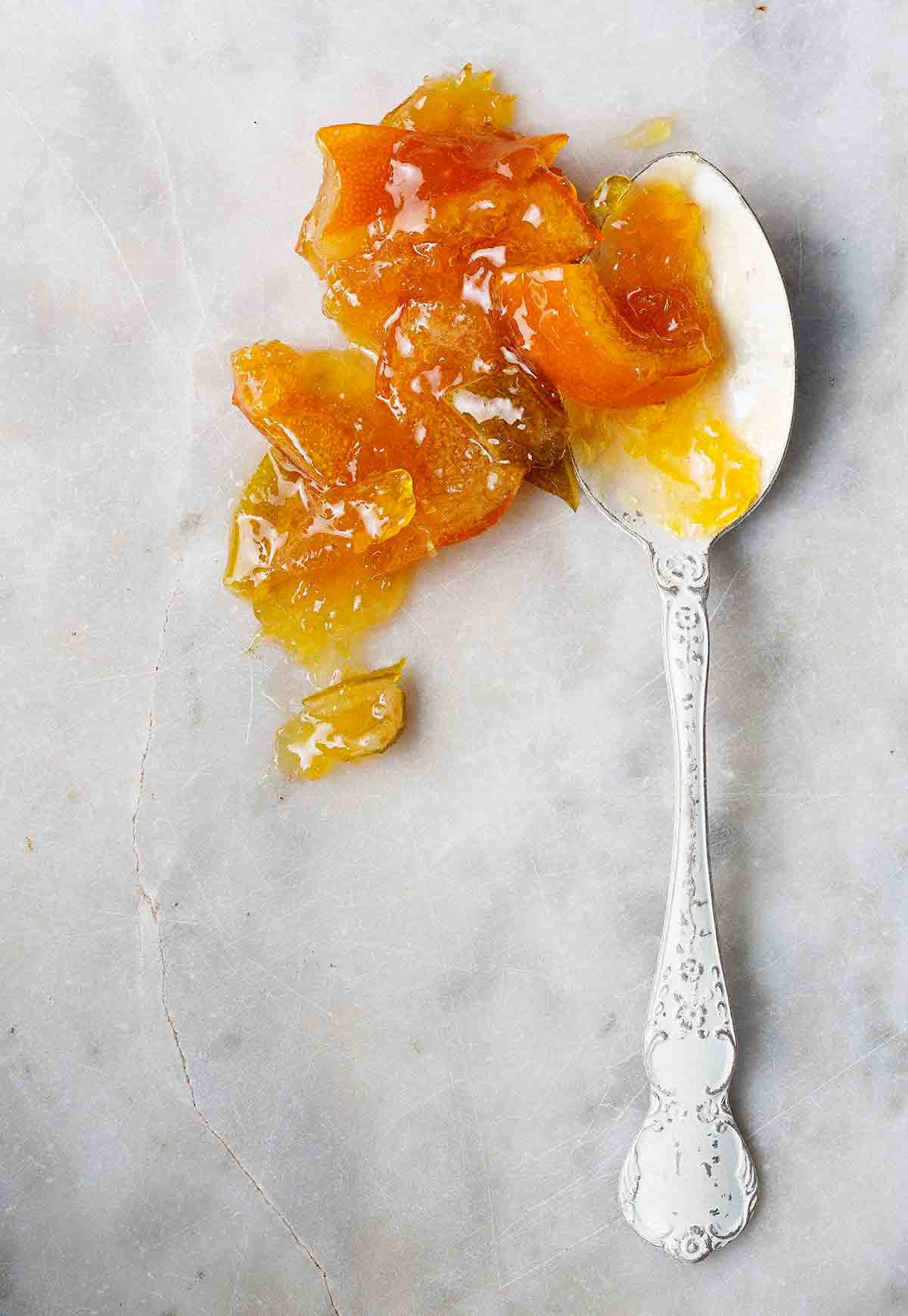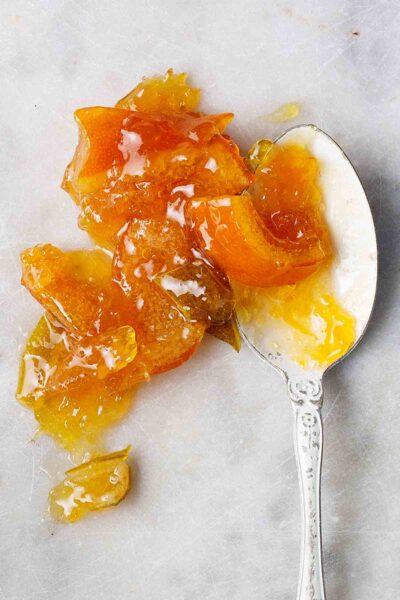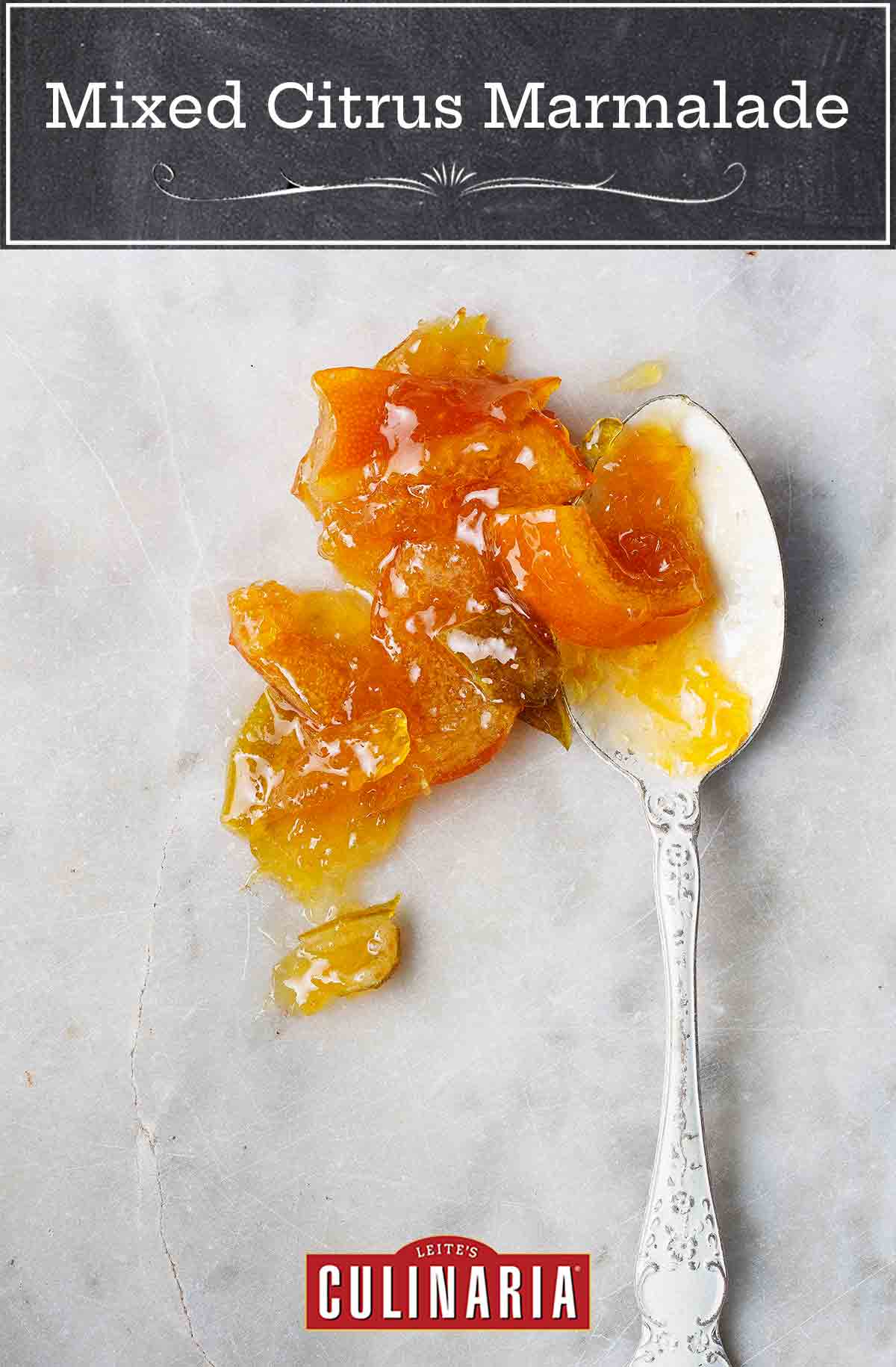
Mixed citrus marmalade tends to divvy the world into a couple camps—those who simply must have it with their morning toast and those who think they can live without it. Before you count yourself among the second camp, do yourself a kindness and try this mixed citrus marmalade with orange and mandarin and lime. It’s unlike any fruit preserves you’ll ever find in a store and is essentially citrus on a spoon. Simple to make at home. Complex as heck in taste.–Angie Zoobkoff
What’s the difference between marmalade and jam?
They’re quite similar. Put simply, jam is sugar and fruit whereas marmalade contains sugar as well as the rind of citrus fruit for a pleasingly chunky texture.

Mixed Citrus Marmalade
Equipment
- Jars with canning rings and lids
Ingredients
- 1 pound 2 ounces thin-skinned seedless oranges, preferably organic
- 1 pound 2 ounces thin-skinned mandarins, such as clementines, preferably organic
- 1 pound 2 ounces thin-skinned limes, preferably organic
- 8 cups cold water
- 4 pounds 6 ounces superfine sugar (or simply pulse granulated sugar in a food processor or blender until finely ground but not powdery)
- Juice of 2 lemons (4 to 6 tablespoons)
Instructions
- To make a chunky marmalade, combine the whole fruit and water in a pot, cover, and simmer for 1 to 2 hours, until the fruit is tender. Use a slotted spoon to remove the fruit from the liquid and let it cool slightly. Cut the fruit into slices. Pick out as many seeds as you can and toss them in the cooking liquid. (The seeds contain pectin for setting the jam.) Simmer the liquid for another 20 minutes, then strain the liquid and discard the seeds.To make a less chunky marmalade, coarsely chop the fruit, toss it in a pot with the water, cover, and simmer for 1 to 2 hours, until the fruit is tender. Use a slotted spoon to remove the fruit from the liquid and let it cool slightly. Pick out as many seeds as you can and toss them in the cooking liquid. (The seeds contain pectin for setting the jam.) Simmer the liquid for another 20 minutes, then strain the liquid and discard the seeds.
- Measure the fruit in cups and add enough strained cooking liquid to make a total of 6 cups (1.5 litres). Return the fruit and liquid to the clean pot. Add the sugar and lemon juice and stir over low heat until the sugar dissolves.
- Increase the heat and boil, stirring occasionally to keep the mixture from scorching and skimming foam from the surface as necessary, for 30 to 35 minutes, until the marmalade reaches its setting point. This happens around 220°F (104°C) can be tested by putting a teaspoon of the marmalade onto a chilled plate and observing it. The marmalade is set when it appears firm with a wrinkle on the surface once it cools slightly.
- Ladle the hot marmalade into warm sterilized jars and immediately seal the jars. Store in a cool, dark place for up to 12 months. Refrigerate after opening.

Explore More with AI
Nutrition
Nutrition information is automatically calculated, so should only be used as an approximation.
Recipe Testers’ Reviews
This mixed citrus marmalade in no way resembles store-bought citrus marmalade. It’s far superior in taste.
I used 3 navel oranges, 4 clementines, and 6 limes. I chose to chop the fruit before simmering it in the water for 2 hours. After straining, I was left with almost 6 cups poached fruit. Adding most of the liquid back to make 6 cups left 500 ml of the strained liquid leftover. I simmered the whole thing with the sugar for 45 minutes until it was jammy, it being quite thick by that time and only a small amount of foam to skim off.
We thought it might be too sweet after adding all that sugar, but it’s not. It has that lovely sweet-tart marmalade-y taste that’s so familiar. It’s not clear like the store-bought stuff but rather more jam-like in appearance. I filled a 500-ml jar, a 250-ml jar, and six 125-ml jars. Marmalade is the sort of thing people either love or hate so finding homes for the marmalade will be the biggest challenge for this recipe.












Hi I was wondering can you use lemons instead of limes and if so would the quantity be the same thanking you Glennis
Glennis, I’ve never substituted lemons for limes in this. Lemons are more tarter than limes and tend to require more sugar to balance the flavor. Preserve-making is all about the correct amount of sugar to fruit ratio. I’d be hesitant to swap them out without a thorough understanding of what lemons would do to the marmalade. Not the clearest of answers, I know, but I don’t want you to spend money on a hunch only to have an inedible pot of marmalade in the end.
Hi David. Thank you for your feedback. I hoping you could use the lemons instead of limes as I have been given home grown oranges, mandarins and lemons. I will buy some limes and do it that way.
Oh, my, how lucky you are, Glennis. It would be such a wonderful thing to have those gifts preserved.
What I suggest is hopping over to a preserving/canning site. I’m sure they’re far more informed than I am about the chemistry involved. That way, you can use this recipe if it strikes your fancy, but with the proper substitution.
How does that sound?
Sounds wonderful, but the last mixed fruit marmalade I made using the whole fruit turned out to be very bitter. Does this problem occur with this recipe?
Nancy, the rind of the fruit is what causes the bitterness in marmalade. The multiple boiling steps in this recipe will help with that issue. You may have also noticed that the recipe calls for thin-skinned fruit. This is also important as it will reduce the amount of bitterness.